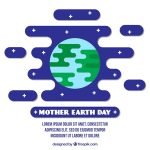
You’ve reached the ultimate tarot reading guide, designed to help you navigate the intricate world of tarot. Whether you’re a beginner or an experienced reader, this comprehensive guide covers everything from tarot history to mastering various decks and readings.
Tarot cards first appeared in Europe in the early 14th century as a four-suited card game in Italy. The “Visconti-Sforza” deck linked to Italian royalty, the “Mantegna” deck (1470-1485), and the 15th-century Marseille deck were among the early popular sets. In the 16th century, tarot became associated with mysticism, with figures like British astronomer John Dee using them for mystical purposes.
By the 18th century, tarot had further evolved, with French occultist Antoine Court de Gébelin linking the Major Arcana to ancient Egyptian wisdom. In the 19th century, researchers like Eliphas Levi connected tarot to the Hebrew Enochian alphabet. Social attitudes toward tarot also shifted, transforming it from simple fortune-telling to a profound tool for spiritual insight.
A standard tarot deck consists of 78 cards divided into the Major Arcana and Minor Arcana. The Major Arcana includes 22 cards representing universal themes and significant life experiences. The Minor Arcana has 56 cards, divided into the suits of wands, cups, swords, and pentacles, each corresponding to different life aspects and elements.
Interpreting tarot cards involves understanding the meanings of upright and reversed positions, which can significantly change the reading’s message. Some readers prefer using only upright meanings for their positive interpretations, while others include reversed meanings for a more detailed analysis.
Each card in the Major Arcana has specific meanings:
– The Fool represents youthful enthusiasm and a willingness to embrace the unexpected.
– The Magician highlights your unique skills and potential for success.
– The High Priestess suggests trusting your intuition and inner wisdom.
– The Empress embodies femininity, beauty, and a strong connection to nature.
– The Emperor signifies authority, stability, and career advancement.
– The Hierophant is a spiritual guide suggesting rule-following and spiritual growth.
– The Lovers focus on relationships, values, and significant choices.
– The Chariot symbolizes determination and potential victory.
– Strength indicates resilience and overcoming challenges.
– The Hermit represents introspection and finding answers within.
– The Wheel of Fortune reminds you of life’s constant changes.
– Justice emphasizes fairness and the consequences of actions.
– The Hanged Man suggests that sacrifices can lead to beneficial outcomes.
– Death signifies transformation and necessary changes.
– Temperance advocates for patience and adaptability.
– The Devil warns of feelings of restriction and the importance of focus.
– The Tower suggests letting go of weakened aspects of life for stability.
– The Star offers hope and healing.
– The Moon highlights hidden emotions and the need for caution.
– The Sun brings joy, positivity, and progress.
– Judgement encourages reflection on past decisions.
– The World represents fulfillment and readiness for the next life chapter.
The Minor Arcana’s suits also offer insights—Cups for emotions and relationships, Wands for creativity and action, Swords for complex decisions, and Pentacles for financial and material concerns. Unique decks like the Rider-Waite-Smith, Thoth Tarot, Wild Unknown Tarot, Shadowscapes Tarot, and others offer various artistic and symbolic interpretations.
Different types of tarot readings include general readings for overall life guidance, question-based readings for specific issues, theme-based readings focusing on particular life aspects, and past or future readings exploring how different timelines affect the present.
To prepare for a tarot reading, choose a deck that resonates with you and understand each card’s meaning. Set a clear intention for your reading, shuffle the cards to clear energy, and lay them out in a spread that suits your question. Interpreting the cards involves combining traditional meanings with personal intuition.
When reading for others, create a comfortable environment and explain the process. Listen carefully to the client’s concerns and provide interpretations respectfully and honestly. Selecting the right spread can help answer specific questions or offer general life guidance.
In summary, tarot readings provide profound insights into personal growth, relationships, and decision-making. Whether you’re new to tarot or an expert, honing your skills and trusting your intuition will enhance your readings.


